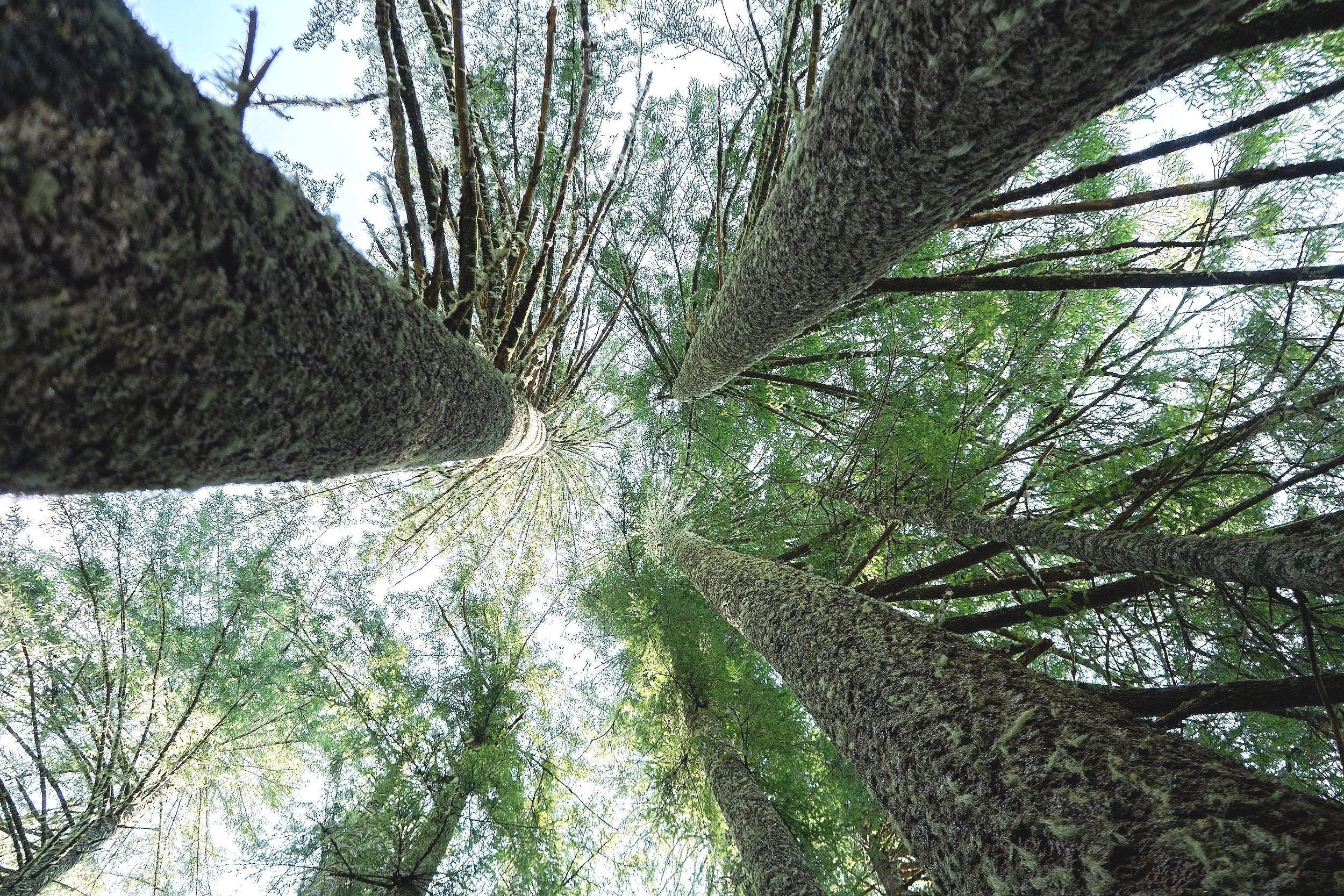Trump 2.0 and the Nation’s Federal Forestlands
Top Line: The excesses of the executive branch will need to be checked by the judicial branch, the legislative branch, and/or the people.
Figure 1. The official 2025 portrait of Donald J. Trump, 47th president of the United States of America. Note the striking similarity to the official mugshot in Figure 6. Source: The White House (Wikipedia).
The official presidential portrait is a political Rorschach test. While MAGAts and Musketeers see things like strength, chaos, and having his friends’ backs, I see things like defiance of authority, disdain for nonbillionaires, and—at his essence—fuck you and future generations. (Just because I’m paranoid, it doesn’t mean I’m not being followed.)
“The Democrats don’t matter. The real opposition is the media. And the way to deal with them is to flood the zone with shit.” So said presidential advisor and confidant Steve Bannon to best-selling author Michael Lewis in 2021. As of March 27, 2025, President Trump had signed 103 formal “executive orders” (14147 to 14249). Undoubtedly, many more will follow. This count doesn’t include other policy issuances of the president, including presidential memorandums, symbolic proclamations, and tweets.
Add to this all the maniacal mischief of co-president Elonia Musk and said zone is flooded. That’s the idea. It’s working right now, but its effectiveness wears off as the consequences of the shit sink in.
Two of Trump’s EOs to date are focused on increasing timber supply from federal public lands and also nonfederal domestic timberlands. Let’s first examine these two EOs as to their intent and then look at the ability of the public lands conservation community to thwart them.
Figure 2. An old-growth incense cedar in the Yellow Panther Timber Sale on the BLM Roseburg District in Douglas County, Oregon. Source: Cascadia Wildlands.
Two Trump Timber Tantrums
In this discussion of Trump’s two timber tantrum EOs regarding federal public lands, I will—with deep appreciation—liberally and shamelessly quote my colleague and friend Garett Rose of the Natural Resources Defense Council (NRDC).
The Canadians Are Attacking Us with Lumber! Executive Order
Trump’s first stump-making executive order is “Addressing the Threat to National Security from Imports of Timber, Lumber.” According to Garett Rose:
The Trump administration is seeking to justify increased domestic logging on federal lands by dubiously asserting that U.S. reliance on imported wood products is a national security issue. “National security” is one of the provisions under the United States–Canada–Mexico Agreement that can be used to justify the use of tariffs. This EO positions the administration to bypass foundational environmental safeguards protecting Americans’ air, water, climate, and treasured landscapes—despite the fact that the United States already has a robust domestic timber industry, exporting $9.51 billion of forest products last year.
This EO:
· Asserts that wood products are essential to the military and civilian construction industry, asserts that other countries are taking advantage of our markets, and establishes that ensuring a “reliable, secure, and resilient domestic” supply of timber is a national policy.
· Directs the Secretary of Commerce to investigate the effects of imported wood products on national security, including whether additional tariffs, quotas, or other trade restrictions are needed.
· Orders the Secretary of Commerce to deliver a report within 270 days on national security threats from imported timbers and recommendations for addressing such threats.
Please permit two brief snarks:
Figure 3. Logging levels on the National Forest System from 1940 to 2021 measured in millions of board feet. The cut value, represented by the rust-colored line, is in 2021 dollars. That green area representing cut volume includes most of the old-growth trees on our national forests, which have been lost to logging. Source: Congressional Research Service.
• The US exports wood products to several European, Caribbean, and Asian nations. Which nation buys the most US wood products? Canada. Probably not for much longer.
• In this EO Trump says:
The United States has ample timber resources. The current United States softwood lumber industry has the practical production capacity to supply 95 percent of the United States’ 2024 softwood consumption. Yet, since 2016 the United States has been a net importer of lumber.
Even if the US lumber industry were to supply 95 percent of US softwood consumption, imports would still be necessary to reach 100 percent. More important, the amount of timber that can be logged is supposed to be based on the capacity of the forest landscape to tolerate such logging, not the current ability of lumber mills to consume it.
The Timber Über Alles Executive Order
Trump’s second stump-maker is titled “Immediate Expansion of American Timber Production.” Again, here is the take by NRDC’s Garett Rose (emphasis in original):
The second EO calls for an immediate increase in federal logging:
• Fully exploiting our domestic timber supply (section 1): This EO turns federal forests into little more than tree farms, framing logging as their primary purpose. It deems increasing timber production to be a matter of “national and economic security” and aims to reverse “onerous Federal policies” that have prevented the ability “to fully exploit our domestic timber supply.” It barely mentions ecological values and community protection from wildfire impacts, and then only as secondary to corporate enrichment.
• Weakening environmental review (section 2): The agencies are directed to take action, on a rolling basis, to undermine National Environmental Policy Act (NEPA) and Endangered Species Act (ESA) protections in order to expedite logging. Specifically:
The Bureau of Land Management (BLM) and U.S. Forest Service (USFS) must issue guidance to boost logging under existing contracting authority (Good Neighbor Authority, Stewardship Contracting, and Tribal Forest Protection Act) and propose legislation to expand logging authority (within 30 days of the EO).
The Fish and Wildlife Service (FWS) and National Marine Fisheries Service (NMFS) must develop a strategy to expedite ESA review applicable to logging projects and delegate consultation (including proposing legislative changes) (within 60 days of the EO).
BLM and USFS must propose jointly annual targets for timber sold from federal lands, measured in millions of board feet (within 90 days of the EO).
The U.S. Department of the Interior (DOI) and the U.S. Department of Agriculture (USDA) must complete the Whitebark Pine Rangewide Programmatic Consultation under the ESA* (within 120 days of the EO).
The DOI and USDA must consider adopting the NEPA exemptions (“categorical exclusions”) for logging projects that other agencies have adopted. For example, USFS’s CE-6 (36 C.F.R. § 220.6(e)(6)) has been expansively interpreted by the agency recently to exempt increasingly large projects from NEPA. BLM does not yet have an exemption like this (within 180 days of the EO).
The DOI must consider adopting and readopting NEPA exemptions for thinning and salvage logging projects, respectively (within 280 days of the EO).
• Undoing existing environmental protections (section 3): The agencies are generally directed to eliminate any existing policy (regulations, settlements, guidance, etc.) that creates an “undue burden” on logging in federal forests. “Undue burden” is undefined.
• Weakening protections for endangered species (section 4):
The agencies are directed to use ESA emergency provisions to speed up section 7 consultation for federal logging projects.
The Endangered Species Committee is directed to identify ESA-related obstacles to federal logging and develop additional ways to boost federal logging.
FWS and NMFS are tasked with prioritizing federal logging–related ESA consultation.
*NRDC petitioned FWS to have whitebark pine listed under the ESA in 2008. The agency listed the species as threatened in 2022.
Figure 4. The oldest trees in this stand seem to have survived the last stand-replacing fire as they appear to have grown in the open (all those lateral branches far down the trunk would have fallen off if the tree had grown in a denser stand). Source: Cascadia Wildlands.
For More Information
Congressional Research Service. October 25, 2022. “Timber Harvesting on Federal Lands.”
Government Accountability Office. December 19, 2024. “Forest Service: Timber Sales in Fiscal Years 2014–2023.”
Rose, Garett. March 5, 2025. “Executive Orders Direct a Massive Expansion of Logging on Public Lands.” Natural Resources Defense Council.


